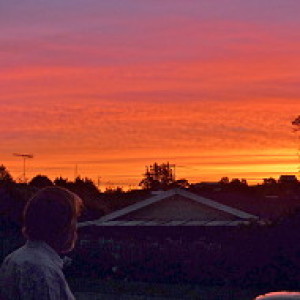Shag in a pine tree
This morning I ran to the other side of the Mahurangi East Peninsula (not that that is very far!). As I arrived at the bank of the estuarine part of the Mahurangi River, I saw a couple of pukeko, and was still paying them a bit of attention as I walked below some pine trees. With much wing beat noise and no cries, four large birds left from the upper branches of a large pine tree. I spun around, and managed to get a photo of them in flight at a distance. Presumed that they were herons.
Then I noticed this fellow, high up in the same pine tree. With more time and better focus I was able to distinguish it as a shag. New to this bird identification business, I thought I was seeing a small shag (kawaupaka). This evening when I had downloaded today's photos, I realised that what I had got was a Small Black Shag (kawau tui). Close examination of the four flying away revealed that they were also kawau tui.
I apologise for being unable to find anywhere to take a photo without pine needles covering most of the body. Looked at in large, it is possible to see the match with the description included below (taken from New Zealand Birds Online).
The little black shag is a sleek, black-plumaged shag with a glossy sheen on the back and a thin black to dark grey bill, black legs and black feet; facial skin is dark and the iris is bright green. Little black shags are similar in size to little shags, but they lack any white plumage and have a relatively short tail. Little black shags occur in harbours, lakes, estuaries and coastal inlets. They are gregarious when feeding and roosting, and are the only New Zealand shag species that routinely forages co-operatively in flocks. They fly strongly, close to the water and in a V formation, the wings sometimes almost touching. They occur mostly in the North Island and disperse in autumn to feed and roost in tight-knit flocks.
Little black shags are obviously smaller than black shags and they are often seen in flocks of a few birds to about 100, occasionally more. They breed in colonies in trees overhanging water, and sometimes on the ground on small islands. Many juvenile little shags are completely dark, but they differ from little black shags in having stubby yellow bills and relatively longer tails.
Little black shags are thought to be a relatively new species in New Zealand and their distribution is increasing. They mainly occur in the North Island, particularly in Northland, Rotorua, Taupo, Wairarapa and Wellington. Little black shags are seen mostly on harbours and lakes, but also occur on braided rivers, and muddy edges of inland and coastal inlets, lakes and ponds, including sewerage ponds. The population is unknown but is thought to be slowly increasing and may number several thousands.
Foraging adults are at risk from entanglement in unattended set nets, which potentially could ensnare an entire feeding flock. Predators may take some eggs and chicks, but this has not been studied.
Little black shags breed colonially between late October and December, sometimes nesting with other shag species. The nest is an open platform of sticks and twigs, lined with leaves and grass, in trees overhanging fresh water. The 2-5 (typically 4) pale bluish-green eggs are laid 2 days apart. It is thought that both sexes share nest building, incubation and protecting chicks. The incubation period is unknown. Young are naked at hatching. Juvenile plumage is dark brown with slight scalloping appearing with age.
Little black shags are a highly gregarious species, especially after breeding although birds are also seen singly or in small groups. Conspicuous flocks of up to 100 birds (sometimes more) feed, roost and travel together at estuaries, lakes and rivers. They forage co-operatively, herding and encircling shoals of small fish. Birds feed throughout the day but rest at times on rocks, shingle or river banks or mudflats. Roosting is in flocks in trees or on rocky outcrops on the shoreline. Little black shags are strong fliers, usually just above the water surface and often in a V formation. Males display a variety of mate-attraction and territorial displays at or near the nest, including wing-waving, gargling, pointing, kink-throating and hopping. Little black shags mainly consume small fish caught in fresh or marine environments.

Comments
Sign in or get an account to comment.


